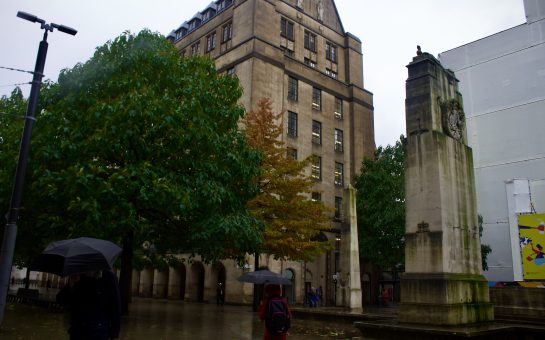That the Covid-19 pandemic has irreversibly altered our perception of normality is becoming something of a cliché.
In the frenzied run-up to national lockdown, the speed at which our everyday lives changed was astonishing.
Queues snaked outside supermarkets, public transport carriages ghosted past eerily empty, and city centres fell deathly silent as we retreated indoors to avoid infection. It did not take long for the coronavirus to exert a stranglehold over how we live, and the notion that the world we would return to post-Covid would be just as we left it quickly evaporated.
Yet it is often the case with clichés that we never really examine them or understand what they mean, or think their details through in relation to the particular case.
The cliché of ‘the new normal’ is no different. The question we ask ourselves now is not if our lives will change, but how we will adapt to change. Which aspects of normality will re-establish themselves; which elements of our day-to-day lives will be dispensed of; and what sort of habits and routines will rise in their place?
Across all sectors, there is a guessing game underway. In commerce for example, the challenge now is to predict which trends set during lockdown will persist in our post-Covid society.
More specifically, major supermarkets will adapt their business models to fall in line with customers’ new shopping habits, which have altered irrevocably. Transport operators – whose trains, trams and buses are now disconcertingly spacious and quiet – must now try and actually sell the idea of the commute, given that commuters themselves are no longer a given.
In the education sector, however, the logistical minefield that scientists, civil servants, teachers, parents, and politicians have had to navigate has been exceptionally complicated. Behind welfare and healthcare, education has been high on the list of priorities during the pandemic. It is, of course, a basic human right, and as such the government has a statutory duty to provide education for young people of all ages, abilities, backgrounds, and circumstances. Effectively, learning never really stops.
Pupils in England return to school for the autumn term next week. Scotland, whose education system has always been offset calendrically compared to England, saw its schoolchildren return to the classroom back on August 11th. For many of us outside the educational and logistical bubble, the simplistic assumption is that schools sent out homework online, parents home-schooled where possible, and authorities reopened schools when the infection rate declined.
The reality, of course, is that education throughout lockdown, and the plans for its resumption, were both painstaking and complex.
Questions pertaining to how the authorities manage to provide for the most vulnerable children, and how parents and teachers coped with home-schooling, are still prominent. When looking back at the height of lockdown now, many of us will still will be wondering how those in especially difficult circumstances managed.
Although the Johnson administration has been heavily criticised for its response to the coronavirus pandemic, there has no doubt been a great deal of positive, redeeming work undertaken by people in apolitical positions across the country: teachers, parents, and civil servants, for example. They provide a fascinating insight into how schools and authorities managed to provide education and support to children, teachers, and parents throughout particularly hard times.
Laurence Findlay is the Director of Education and Children’s Services in Aberdeenshire. He admitted, perhaps unsurprisingly, that the recent months had been some of the most challenging of his career. Although schools – along with all the services they provide – had been shut, the logistics behind the scenes went into overdrive in order to support children and parents across the region during lockdown. One example Findlay outlined was children who, in normal circumstances, would be entitled to a free school meal. But he explains that the authority still found a way to fulfil that obligation during the height of lockdown.
“One of the first things we had to do was ensure that young people who were entitled to free school meals still received a meal, because we have a statutory duty to provide that,” Findlay explains. “We started off by opening one school in each cluster [to provide a school meal]. There were 17 clusters in Aberdeenshire, one linked to each secondary school. If children are entitled to a free school meal, young people can grab a bag – a sandwich, some fruit, and some crisps for lunch.”
“We did that for a week but then we changed it. Because Aberdeenshire is so big, some of the parents – particularly those living in poverty – didn’t have any form of transport. What we did instead was pay the money directly into the bank accounts of the parents who were eligible for free school meals for their children.”
“Another requirement of ours as an authority was to provide critical childcare cover key worker children. We had to set that up childcare hubs, get them staffed, get risk assessments done, investigate various health and safety implications – all that kind of thing. That was very much what we did at the outset back in March.”
The process leading to the reopening of schools was similarly fraught. Aberdeenshire is a large geographical area (approximately 2,437 square miles 6,313 square kilometres in size, and contains a very diverse range of school types and sizes. This has meant that the safe reopening of schools has proved particularly complex, even if pupils are not required to socially distance at schools in Scotland.
“Some schools have five children in them, but some of the larger, more complex schools have 1500 children in them – then we’ve got everything else in between,” Findlay explains. “We have some schools that are brand new which opened in the last couple of years, then we’ve got other schools that are about 200 years old.
“The important thing is we hold all the spatial data [about the schools]. We know how many classrooms and spaces every school has. We know the square metreage of every space in every school. We know how many children we can fit in every space of every school and how many staff we can fit in.
“Although it sounds quite complex, because we’ve got this data at our fingertips, we are able to apply social distancing, if necessary, quite consistently across the piece.”
Trainee teachers, meanwhile, endured a tense five months before they began teaching full-time. One who I spoke to, who is also based in Aberdeenshire, had only undergone a total of 15 days’ worth of teaching before taking a full class permanently earlier this month.
“We lost five weeks of placement and in that five weeks I probably would have doubled my teaching time over the year,” she says. “But I would say [the reduced training hours] is more likely to impact our ability to plan teaching in the long term rather than out ability to teach. It’s the long-term planning we’ve missed out on.
“That said, many of us are in the same boat. You could’ve been teaching for 30 years, and this coming year is still going to be a totally new experience. In that sense I hope everyone comes together a bit more and everything is more collaborative.”
One concern that has been well documented is how teachers will handle a class whose academic ability is more diverse. Whilst some pupils have had access to technology and education at home, others have had an environment far less conducive to learning. Interestingly, however, the teacher I spoke to suggested that this was very much the norm, even before lockdown.
“One of my training placements was a Year 7 class, and their ability ranged from a child who spoke no English and had just arrived into the country to kids who were being supported by the local grammar school because they were so far ahead. The wide range in academic ability is fairly standard for a class now.
“What worries me more from the Covid point of view will be the kids’ health and wellbeing and whether some will have had a potentially very traumatic time at home for six months. Pupils might have been affected by a Covid death or had bereavements and you have to help them through when they come back to school.”
As for parents, experiences of lockdown vary significantly. One parent I spoke to, who is a single-mother of four, had two school-age children to educate during lockdown. She was eventually furloughed from her job as a solicitor, but for one week early on she was juggling her job with home-schooling – an experience which she says she would have been unable to sustain for a long period of time.
“I had to get up very, very early in the morning – normally around 04:00ish – and use that time to do law work,” she says. “I’d then home-school in the morning, before letting the boys play for an hour at lunchtime so I could check some e-mails. After dinner when my youngest went to bed at night, I would then finish off my work for the day.
“Although I managed to work for that one week and home-school at the same time, I don’t think I would have been able to sustain that over a long period – especially because we didn’t know how long we’d be in lockdown for.”
Looking ahead, however, there are some positive ways in which education may move forward as a result of lockdown. Pupils have developed a greater familiarity with technology and remote learning, which in turn can prepare them for working independently during latter years of school.
“The good thing about remote learning is that it’s pretty well known that teenagers don’t work best in the mornings. I found it good that my children could work when they were in the mood to work rather than when they had to work. If you want kids to be self-motivated, you’ve got to give them a bit of freedom to be self-motivated. I think lockdown allowed that.”
Discussing the effects of lockdown with a variety of individuals allows us to glean some of the unexpected positives lockdown has had on the education sector – but only in the short-term. The long-term impact remains obscure. Regardless of what is to come, the work undertaken by civil servants in every capacity, and the difficulties endured by teachers and parents alike, should not go unrecognised.



